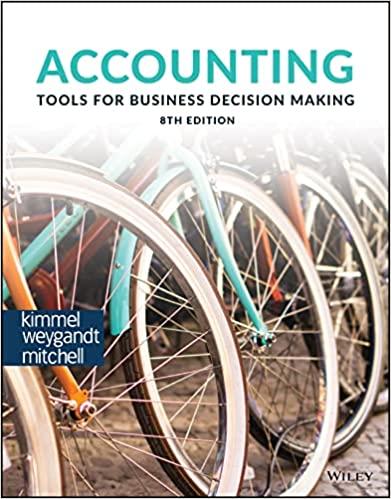Question
In this fictitious case, you are a financial analyst in the Automotive Strategy staff of Millennial Automotive Company (MAC), a global manufacturer of automotive vehicles
In this fictitious case, you are a financial analyst in the Automotive Strategy staff of Millennial Automotive Company (MAC), a global manufacturer of automotive vehicles and products. Your responsibilities include evaluating the financial and strategic implications of corporate investment decisions.
Attached are relevant e-mails and data you have received from Manufacturing and Product Development.
For your meeting with the Ford Finance interviewers:
1. Review the attached material and prepare a one-page executive summary that addresses the alternative strategies outlined in the series of e-mail communications.
2. Please include the following items in your summary:
a. Financial analyses for each alternative you consider, as directed by Ima Starr in her e-mail
b. Your recommendation for which alternative should be chosen (if any)
c. Additional information that would assist you in your evaluation of the alternatives
3. Bring two additional copies of your one-page executive summary to the interview. Please bring your back-up calculations and any supplemental analyses that you have done.
4. It is expected that you will work independently, and that you will keep your work confidential.
From: Ima Starr
To: Analyst
Subject: FW: New Vehicle for US Market
Date: June 26, 2012
Analyst,
I need your help evaluating a manufacturing sourcing decision. Stinger Automotive is investigating selling a new vehicle, the Ray, in the U.S. market. We need to determine if the Ray should be sourced locally in the U.S. by re-tooling an existing facility or by building a new plant in an emerging market. See the notes below from Product Development and the Manufacturing teams providing the program financial assumptions to use in your analysis.
Please evaluate the following in your analysis:
1. Provide a profit (Margin) sensitivity analysis using the range of volume projections and the variable freight cost depending on diesel fuel prices for both source locations. Assume a one period analysis.
2. At what combination of diesel prices and volume is the program profitable in each sourcing scenario?
3. What market share should we recommend for the Marketing & Sales team target?
As you will see, there are trade-offs with each sourcing location option. Let me know which one you would recommend based on the available data, and please let me know what other risks or concerns you have with each alternative.
Ima Starr
Manager - New Model Programs
From: Les Gass
To: Ima Starr
Subject: FW: New Vehicle for US Market
Date: June 25, 2012
Ima,
As a follow-up to my phone call, here is the data my team was able to pull together.
U.S. Source:
Investment $350 Million & 300 Million - will enable us to re-tool an existing facility where the new vehicle would be produced.
Variable Labor -- $(5,000) per unit & $(5.500) per unit
Variable Freight Costs - This is a little more complicated due to the volatility of diesel fuel prices. We've estimated the cost to be 500 gallons of diesel fuel per 10 vehicles. We can fit 10 cars on each car hauler.
Emerging Market Source:
Investment $575 Million & 500 Million - will enable us to build a new facility where the new vehicle would be produced.
Variable Labor -- $(1,500) per unit
Variable Freight Costs - This is a little more complicated due to the volatility of diesel fuel prices. We've estimated the cost to be 500,000 gallons of diesel fuel per 500 vehicles. We can fit 500 cars on each ocean freight carrier.
The economics office has estimated that diesel cost could range between $3.75/gallon & $3.5/gallon and $6.25/gallon & $6.0gallon by the time this vehicle is ready for sale in the U.S.
From a Labor Affairs & Human Resources perspective, re-tooling the U.S. plant would mean new jobs in the U.S. These are new jobs that the unions would support, and this would also be positively received by the local media.
If you need any more data from my team, just let me know.
Les Gass
Manager -- Manufacturing Finance
From: Seymore Dinero
To: Les Gass
Subject: New Vehicle for US Market
Date: June 25, 2012
Les,
Per the discussion at our team meeting, we were able to pull together some data for the study of the Ray.
The average material cost estimates for the new vehicle are below (all in $USD):
U.S. Source -- $(14,000) / Unit & $(12,000)/ Unit
Emerging Market -- $(12,000) / Unit & $(10,000)/ Unit
Note that the emerging market material cost is significantly lower than the U.S. sourced vehicle since many of the parts would be sourced locally (in their local currency) around the assembly facility. While the local suppliers don't have the experience of our U.S. suppliers, they have proven they can meet our stringent specifications.
Additionally, U.S. Marketing & Sales has provided a volume projection for the vehicle segment for our planned launch year which is about four years away. They also provided their market share projection given different price points. Please see their data in the attachment below and incorporate into your sourcing decision analysis.
Please let me know if you need any information.
Seymore Dinero
Controller
Product Development Finance
Email Attachment #1:
Projected Original Base Case Vehicle Segment Volume 1,500,000
Ray Market Share Projections at Various Price Points
Vehicle Revenue $23,500 $23,000 $22,500 $22,000 $21,500 $21,000 $20,500
Vehicle Segment Share7%8%9%10%11%12%13%
Step by Step Solution
There are 3 Steps involved in it
Step: 1

Get Instant Access to Expert-Tailored Solutions
See step-by-step solutions with expert insights and AI powered tools for academic success
Step: 2

Step: 3

Ace Your Homework with AI
Get the answers you need in no time with our AI-driven, step-by-step assistance
Get Started


